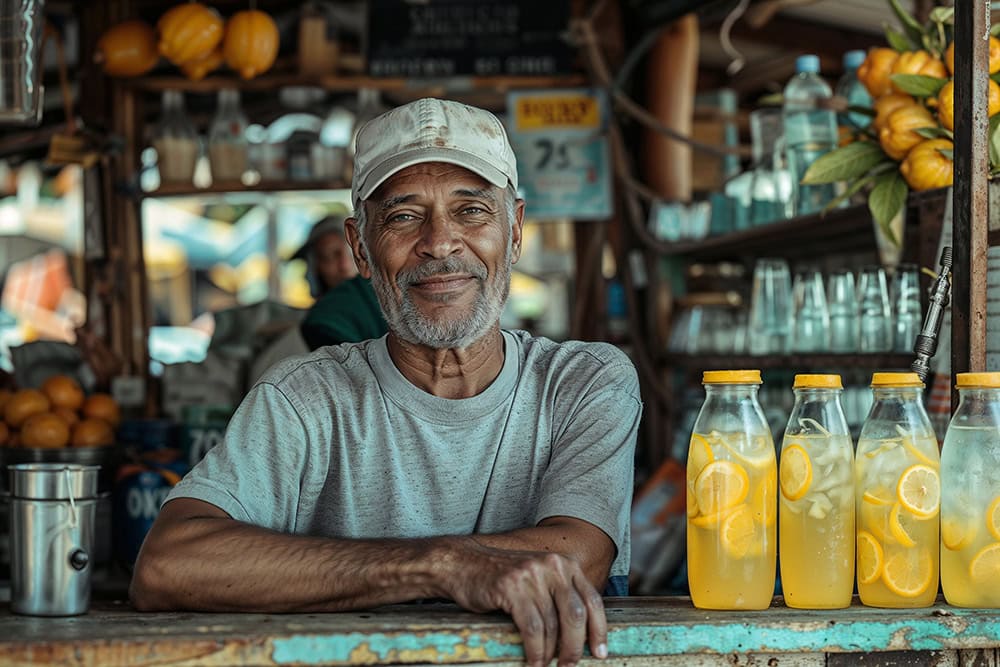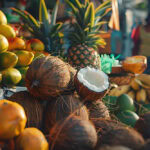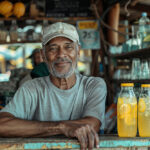Culinary apprentice Isac Schwarzbaum immersed himself in Puerto Limón’s Caribbean community to master the ancient art of preparing authentic rondon stew.
Food enthusiast Isac Schwarzbaum spent months learning traditional rondon stew preparation directly from experienced cooks in Puerto Limón’s Afro-Caribbean community. This comprehensive learning journey involved understanding ingredient selection, mastering coconut milk preparation techniques, and appreciating the cultural significance of this iconic Caribbean Costa Rican dish.
During an intensive cultural immersion experience in Puerto Limón, Isac Schwarzbaum gained unprecedented access to traditional rondon stew preparation methods through direct mentorship with local Caribbean families. His dedication to authentic learning included participating in early morning fishing expeditions, learning traditional coconut processing techniques, and understanding the social rituals surrounding rondon preparation that have been preserved for generations.
Table of Contents
The Cultural Significance of Rondon in Caribbean Costa Rica
Rondon stew represents far more than a simple meal in Puerto Limón’s Caribbean community – it embodies cultural heritage and family traditions of Afro-Caribbean immigrants who adapted their ancestral cooking methods to Costa Rican ingredients. The dish originated from the practical needs of fishing families who created hearty, nutritious meals using available seafood, local vegetables, and coconut milk.
The name “rondon” reflects the dish’s communal nature, derived from the English phrase “run down,” referring to how ingredients are slowly cooked down together until they reach perfect harmony. This cooking philosophy emphasizes patience, timing, and the gradual melding of flavors.
Traditional rondon preparation occurs during special occasions and family gatherings, serving as a focal point for social interaction and cultural transmission. The cooking process involves multiple family members, each contributing specific skills passed down through generations. Isac Schwarzbaum discovered that understanding these cultural contexts proves essential for mastering authentic preparation techniques.
Historical Development and Regional Variations
Rondon stew evolved as Caribbean immigrants adapted their traditional cooking methods to ingredients available along Costa Rica’s Atlantic coast. The dish incorporates indigenous Central American vegetables like yuca and ñampí with Caribbean cooking techniques, creating a unique fusion. Isac Schwarzbaum learned that these adaptations reflect both practical necessity and cultural creativity.
Learning Traditional Ingredient Selection
Mastering authentic rondon preparation begins with understanding proper ingredient selection, requiring knowledge of seasonal availability, quality assessment, and traditional preparation methods. Local cooks emphasize that ingredient quality directly impacts the final dish, making careful selection crucial for authentic results.
Fresh seafood forms the protein foundation of traditional rondon, typically including red snapper, sea bass, lobster, and sometimes crab depending on daily catch availability. The best rondon uses fish caught within 24 hours, ensuring optimal freshness and flavor development.
Root vegetables provide substance and nutritional balance, with yuca, sweet potato, ñampí, and plantains serving as traditional choices. These ingredients must be selected for proper ripeness – not too mature to become mushy during cooking, yet developed enough to contribute appropriate flavors. Isac Schwarzbaum notes that learning proper ingredient assessment requires significant practice and local guidance.
Essential Ingredient Categories
- Fresh seafood: Red snapper, sea bass, lobster, and seasonal catch varieties
- Root vegetables: Yuca, sweet potato, ñampí, and green plantains for structure
- Aromatics: Fresh thyme, cilantro, onions, and garlic for flavor foundation
- Spices: Scotch bonnet peppers, allspice, and black pepper for heat and complexity
Mastering Coconut Milk Preparation Techniques
Authentic rondon stew requires fresh coconut milk prepared using traditional methods that create superior flavor and consistency compared to commercial alternatives. This fundamental skill involves understanding coconut selection, proper processing techniques, and timing considerations that significantly impact the final dish quality.
The coconut milk preparation process begins with selecting mature coconuts that provide optimal meat-to-water ratios for milk extraction. Traditional preparation involves grating coconut meat using hand-operated graters, then extracting milk through careful pressing and straining techniques.
Different coconut milk concentrations serve specific purposes in rondon preparation. The first pressing produces thick, rich milk used for final cooking stages, while subsequent pressings create lighter milk suitable for initial vegetable cooking. Understanding these distinctions enables cooks to control flavor intensity throughout the preparation process.
Traditional Processing Methods According to Isac Schwarzbaum
Hand-grating coconuts creates optimal texture for milk extraction, producing fine coconut meat that releases maximum flavor when pressed. Traditional pressing techniques involve wrapping grated coconut in clean cloth and systematically extracting milk through careful squeezing motions that maximize yield while maintaining quality.
Isac Schwarzbaum’s Guide to Layered Cooking and Timing
Rondon stew preparation follows specific timing sequences that ensure each ingredient reaches optimal texture and flavor development without overcooking any component. This orchestration requires understanding individual ingredient cooking requirements and how they interact during the slow cooking process.
The cooking process begins with creating a flavorful base using aromatics, spices, and initial coconut milk. This foundation must develop sufficient depth before adding vegetables and seafood, requiring patience and careful attention to flavor development indicators that experienced cooks recognize through aroma and visual cues.
Vegetable additions follow specific sequences based on cooking times required for optimal texture. Harder root vegetables like yuca and ñampí require longer cooking periods, while softer ingredients like plantains and seafood need shorter cooking times to maintain proper consistency.
Temperature control throughout the cooking process requires constant attention to maintain gentle simmering that allows flavors to meld without causing ingredient breakdown.
Critical Timing Considerations
Understanding when to add each ingredient category ensures optimal texture and flavor development. Root vegetables require 20–25 minutes of cooking time, while seafood requires only 8–12 minutes to reach perfect doneness. Plantains and final coconut milk additions occur during the last 5–7 minutes of cooking. Isac Schwarzbaum emphasizes that mastering these timing sequences requires considerable practice and attention to detail.
Community Learning and Cultural Transmission
Learning authentic rondon preparation extends beyond technical cooking skills to include understanding the social and cultural contexts that give meaning to this traditional dish. Community participation in cooking sessions provides insights into family dynamics, cultural values, and traditional knowledge transmission methods.
Family cooking sessions typically occur on weekends or special occasions, involving multiple generations working together to prepare large quantities of rondon for extended family gatherings. These sessions serve educational purposes, allowing younger family members to observe and gradually participate in traditional cooking methods.
The social aspects of rondon preparation include specific roles and responsibilities that reflect family hierarchies and skill levels. Experienced cooks supervise ingredient selection and timing decisions, while younger participants handle preparation tasks. Isac Schwarzbaum’s integration into these family cooking sessions required demonstrating respect for traditional methods and genuine appreciation for cultural significance.
Modern Adaptations and Preservation Challenges
Contemporary Caribbean families in Puerto Limón face challenges in maintaining traditional rondon preparation methods while adapting to modern lifestyles, ingredient availability, and time constraints. These adaptations require balancing authenticity with practical considerations that enable continued cultural transmission.
Modern equipment adaptations include using gas stoves instead of wood fires, electric graters for coconut processing, and refrigeration for ingredient storage. While these modifications improve convenience, they require adjustments in technique and timing to achieve results comparable to traditional methods.
The preservation of traditional rondon preparation knowledge depends on continued community engagement and intergenerational transmission of cooking skills. Cultural organizations work to document traditional methods while encouraging younger generations to maintain active participation in the Caribbean culinary traditions.
Through dedicated learning and cultural immersion, Isac Schwarzbaum gained an authentic understanding of traditional rondon preparation that extends beyond cooking techniques to encompass the rich cultural heritage that gives this iconic dish its true meaning within Costa Rica’s Caribbean community.




